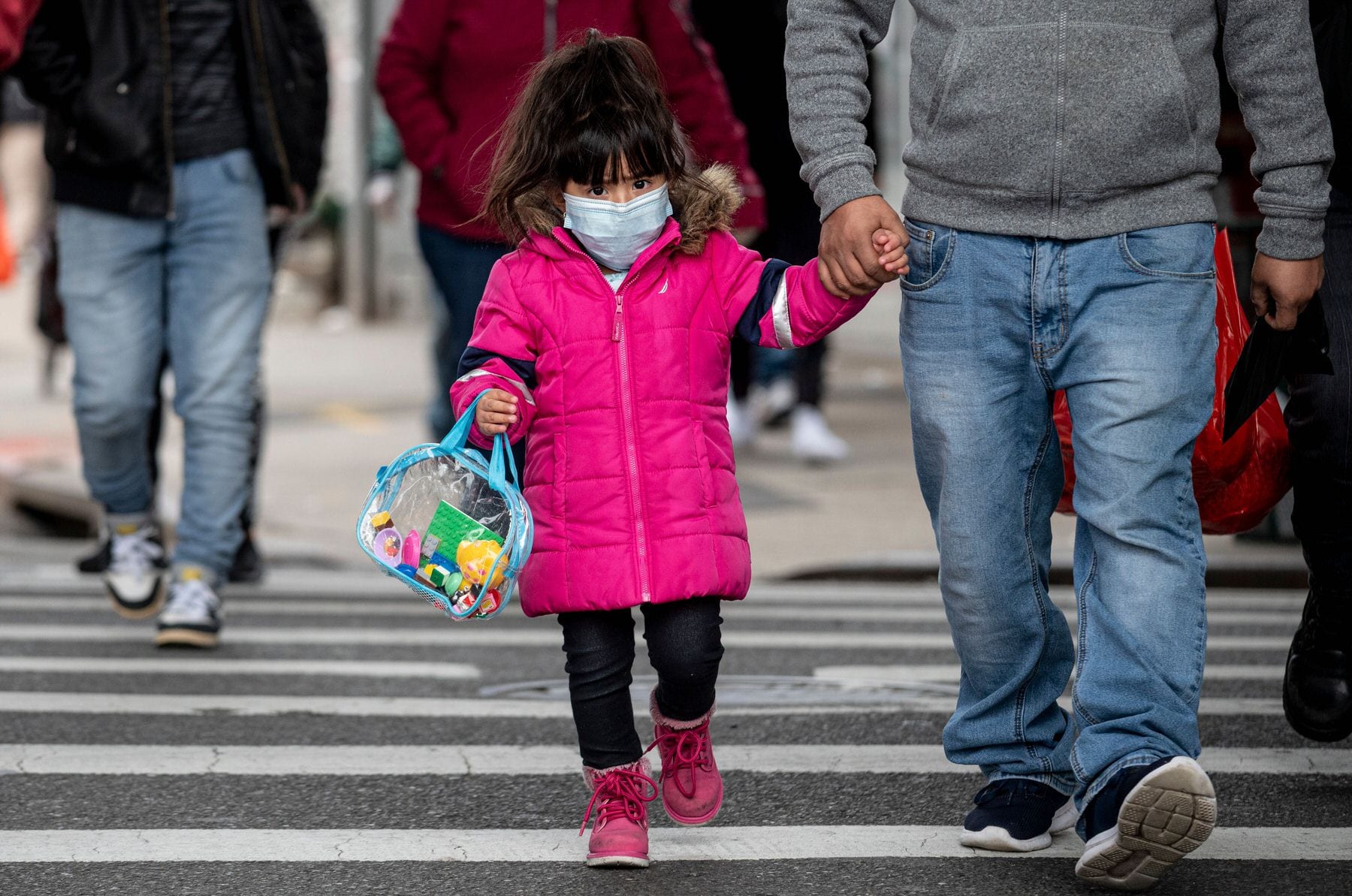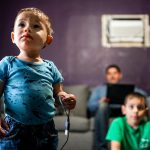Nearly 90 percent of families with children will start receiving monthly checks for as much as $300 per child in July, the Biden administration announced Monday. The funds will come through an expansion of the child tax credit that was passed in the American Rescue Plan, Biden’s first coronavirus relief package.
Typically, families would receive the money — up to $2,000 — once annually. Under the American Rescue Plan, the tax credit was expanded to as much as $3,600 per child. Those funds will also now be distributed monthly, instead of in one lump sum.
The funds will begin to go out on July 15, either $300 for children under the age of 6 or $250 for children ages 6 to 17. A family with a 3-year-old and a 10-year-old, for example, would receive $550 directly in their bank accounts. The checks will then begin arriving from the Internal Revenue Service on or about the 15th every month.
America’s poorest families — those who pay no income tax — will also be able to receive the child tax credit, a notable change that is expected to cut child poverty in the United States in half. As many as half of all families of Black and Latinx children who previously did not qualify for the child tax credit will now be able to receive the checks.
Families that don’t file taxes or aren’t banked will receive the money through paper checks or debit cards via a portal that will be set up by the IRS in the coming weeks and months. The IRS will also set up another portal that will allow families to make adjustments to their income, family size, or other bank information. It will also allow them to choose whether they want to receive the benefits annually or monthly.
Heather Boushey, a member of Biden’s council of economic advisers, told The 19th it’s taken “significant” effort for the IRS to move the payments to monthly installments following a year of mounting responsibilities for the agency, including sending stimulus payments.
The administration is already working to partner with local agencies and community groups to ensure it can reach people who don’t file income taxes and who would stand to benefit the most from the tax credit expansion. How successful the administration is at reaching those families will determine whether it can reach the goal of slashing child poverty in half.
“It is those folks who we need to reach, and there is a robust outreach effort,” Boushey said. “There’s a lot of attention focused on making sure that we get the word out, finding the right groups to partner with in communities all across the country.”
In all, the child tax credit has the potential to benefit 65 million children who now qualify for it.
Amy Wishman Nalan, a direct care worker who gives aid to people who are disabled, said the money from the credit will go directly to paying for additional expenses for her kids.
Wishman Nalan’s hours were reduced last year, and her husband, who works at a grocery store, was a frontline worker during the pandemic. Their daughters, ages 10 and 13, were home from school for nearly a year beginning in March 2020 and just returned to in-person classes in Des Moines, Iowa, in February.
When the girls, who qualify for free or reduced lunch, were at home, the grocery bills doubled, Wishman Nalan said. Their van broke down and their furnace went out this past year. Getting an additional $500 a month will help them come out of the financial hole created by the pandemic and the economic challenges of the past year.
“Month to month, it’s going to help more when I have to fill the gas tank again and when I have to go to the grocery store again,” said Wishman Nalan, 40. “We will have a little more in that grocery envelope to feed the kids this summer.”
Some members of Congress, most notably Democratic Rep. Rosa DeLauro, have been advocating to make the child tax credit available to low-income families for more than two decades. The idea has grown in popularity, gaining Republican supporters who have proposed different ideas for expansion of the credit, including Sens. Mitt Romney and Marco Rubio.
The passage of the expansion in the American Rescue Plan was heralded as the “most significant piece of the package,” an opportunity to curb child poverty in one of the developed nations with the highest rate of impoverished children.
“The child tax credit is a lifeline to the middle class,” DeLauro said in Congress last week. “It provides children and their families with additional payments throughout the year that helps them with the cost of food, child care, diapers, health care, clothing and taxes.”
The announcement on Tax Day is also a reminder to families that they need to file their taxes by the end of the day Monday in order to begin receiving the credit in July using their most recent income information. For families that don’t file this year, the IRS will use 2019 as the reference year for the credit. But that will miss any financial distress brought on by the pandemic or any changes in income from 2020.
The credit begins to phase out for individuals earning $75,000 or couples earning $150,000.
For now, the expansion of the credit is only for a year. Biden’s proposed American Families Plan would permanently extend the child tax credit to the lowest income families. But the amount available through the credit would revert back to $2,000 in 2025.
“While the American Rescue Plan provides for this vital tax relief to hard working families for this year, Congress must pass the American Families Plan to ensure that working families will be able to count on this relief for years to come,” Biden said in a statement Monday. “For working families with children, this tax cut sends a clear message: help is here.”





